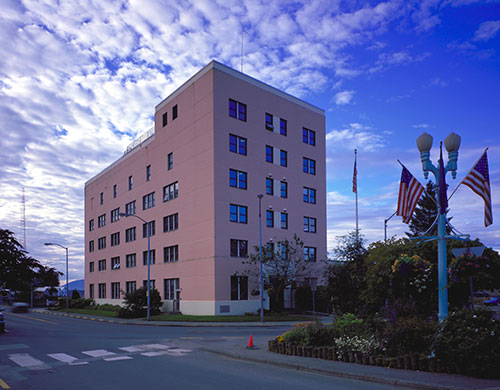
Study Finds Biomass Boilers Are a Viable Option for Heating Federal Buildings
July 17, 2014
According to a study by the National Renewable Energy Laboratory (NREL), biomass boilers will be most cost-effective for buildings in cold northern climates within 50 miles of a wood pellet mill. Of the more than 1,500 GSA-owned buildings, researchers identified approximately 150 assets as potential candidates for biomass heating technology.
Ketchikan Federal Building
The biomass boiler is a renewable energy technology that powers hot-water-heating systems with solid wood fuel—such as wood pellets, chips, or sawdust. Biomass is one tactic the federal government is turning to as part of an effort to make the federal government more sustainable. The boiler, installed at the Ketchikan Federal Building in March 2012 by Southwest Construction, a small, woman-owned business with operations in Anchorage, is part of the GSA’s Green Proving Ground (GPG) program. GSA replaced the building’s outdated, inefficient 1964 steam heating system with an energy efficient hydronic heating system that includes one biomass boiler and one high-efficiency oil-fired boiler that will serve as a back-up. During the first year of operation, GSA ran the new system to test the efficiency and effectiveness of biomass to heat the federal office building. By using both boilers, GSA expected reduced fuel oil consumption by at approximately 50 percent in the first year with potential for greater reductions after the first winter. The Ketchikan Federal Building historically burned up to 9,000 gallons of fuel oil each year. The Green Proving Ground program leverages GSA’s real estate portfolio to evaluate emerging sustainable building technologies. The program aims to drive innovation in environmental performance in federal buildings and help lead market transformation through deployment of new technologies.
Source of News:
|
||
